West Coast EMT Final Exam Study Guide, All Answers Correct, A+ Guide
Document Content and Description Below
West Coast EMT Final Exam Study Guide, All Answers Correct, A+ Guide-AMI (Heart Attack) (Acute Myocardial Infarction) - Blockage in the coronary artery. Death occurs in the myocardial muscle due to la... ck of oxygenated blood flow through the coronary arteries. S/S Chest pain, Pressure, nausea, weakness, fatigue, Dyspnea (SOB), Diaphoresis (excessive Sweat), Abnormal signs, sudden cardiac arrest. Angina pectoris - A period experienced in a patient where heart tissue is not getting enough oxygen. much like spasm of an artery, symptoms as atherosclerostic aretery disease. usually periods of physical or emotional stress when the heart is working hard, and typically goes away. Oxygenation - Oxygenated blood to the tissues is known as perfusion. When oxygen is delivered to the blood. Ventilation is required for oxygenation. Patient Care Report (PCR) - The legal document used to record all patient care activities. This report has direct patient care functions but also administrative and quality control functions. PCRs are also known as prehospital care reports. Respiration - The exchange of oxygen and carbon dioxide The heart and the brain are affected if there is no oxygen. Brain damage begins within 4 - 6 minutes Supraventricular tachycardia (STV): - fast heart rate above the heart's two lower chambers. S/S chest pain, SOB, Diaphoretic Ventilation - The moving of air in and out of the lungs, ventilation is required for effective oxygenation and respiration. Inhalation is the active part of ventilation. Energy is required to ventilate. During inhalation the diaphragm and intercostal muscles contract, intrathoracic pressure decreases. As the thorax enlages/ expands the air passess through the upper and lower airways in to the alveoli. Perfusion - Passage of blood, a blood substitute or other fluid through the blood vessels or other natural channels in an organ or tissue. Aspiration - Fluid or tissue or other substances that go into the lungs that can cause pneumonia or other lung problems. Intracerebral pressure (ICP) - Accumulations of blood within the skull or swelling of the brain(cause). ICP squeezes the brain against bony prominences within the cranium. cheyne stokes or ataxic. S/S decreased pulse, headache, nausea, vomit, decreased alertness, bradycardia, sluggish or nonreactive pupils, decerebrate posturing, and increased or widened blood pressure. Cushing reflex(increased systolic bp, irregular respirations, and decreased pulse rate) Automated external defibrillator (AED) - Device that detects treatable life threatening cardiac arrhythmias(ventricular fibrillation and ventricular tachycardia) and delivers the appropriate electrical shock to the patient. Apnea - Absence of spontaneous breathing Thrombus: - A blood clot, either in the arterial or venous system. when the clot occurs in a cerebral artery it may [Show More]
Last updated: 6 months ago
Preview 1 out of 36 pages
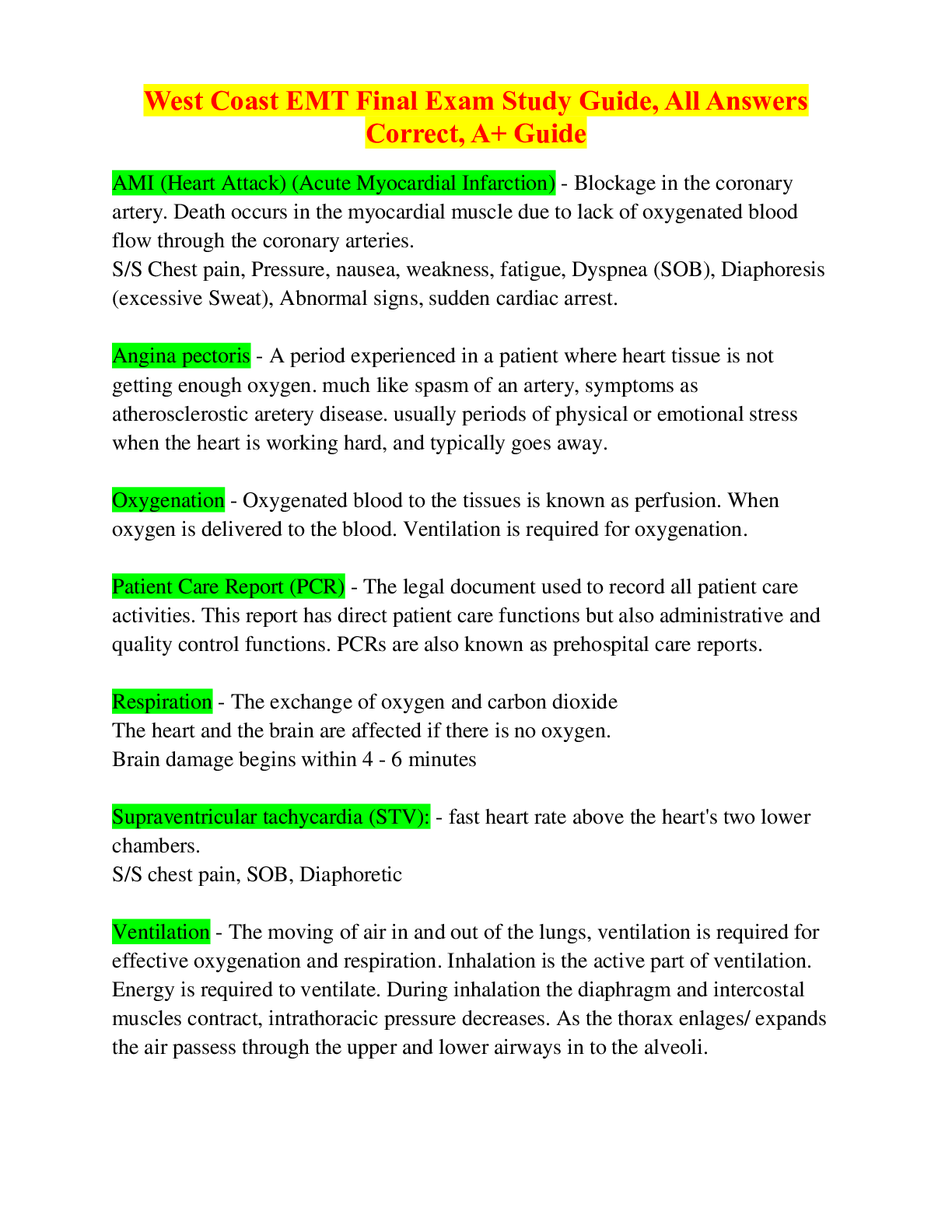
Buy this document to get the full access instantly
Instant Download Access after purchase
Buy NowInstant download
We Accept:

Reviews( 0 )
$13.50
Can't find what you want? Try our AI powered Search
Document information
Connected school, study & course
About the document
Uploaded On
Mar 16, 2023
Number of pages
36
Written in
Additional information
This document has been written for:
Uploaded
Mar 16, 2023
Downloads
0
Views
86

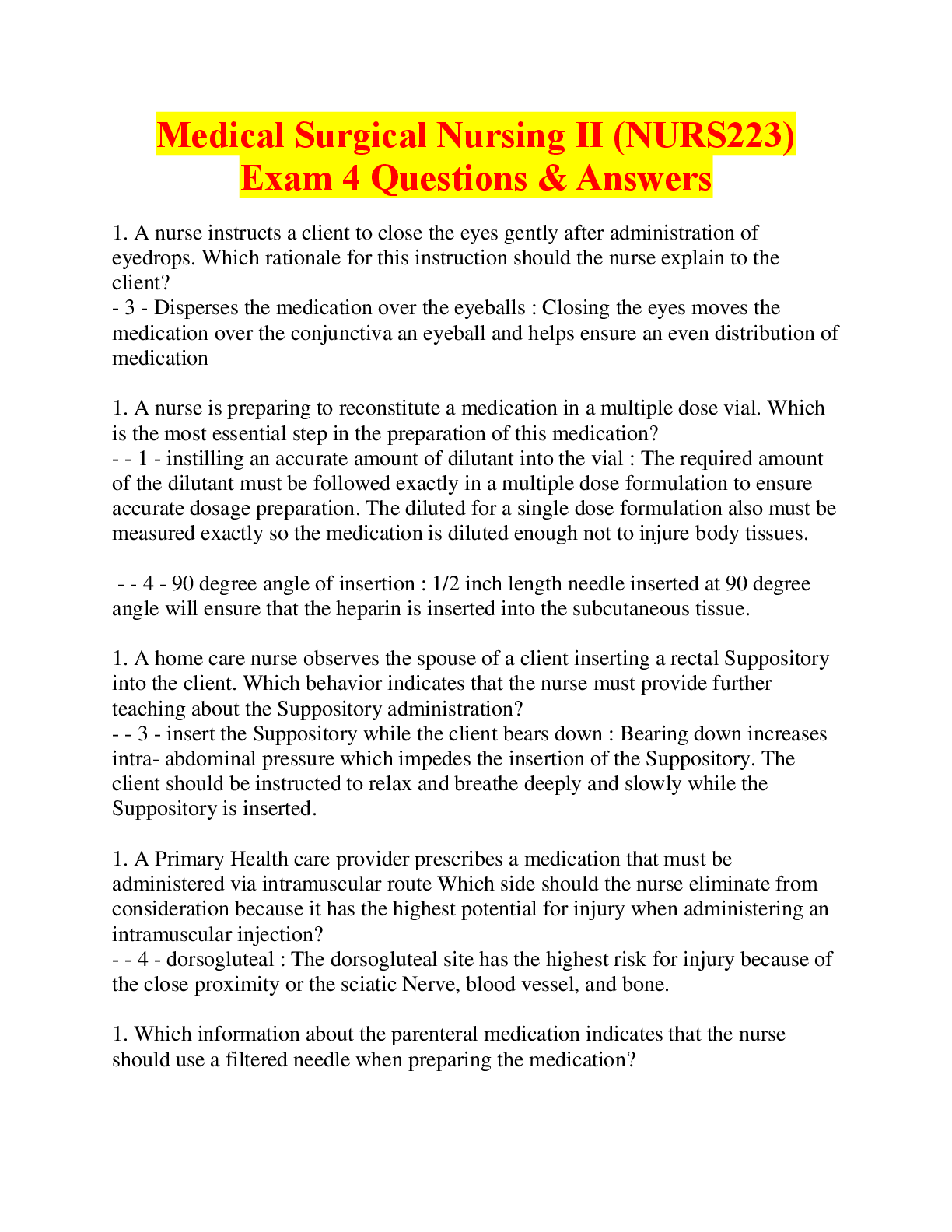
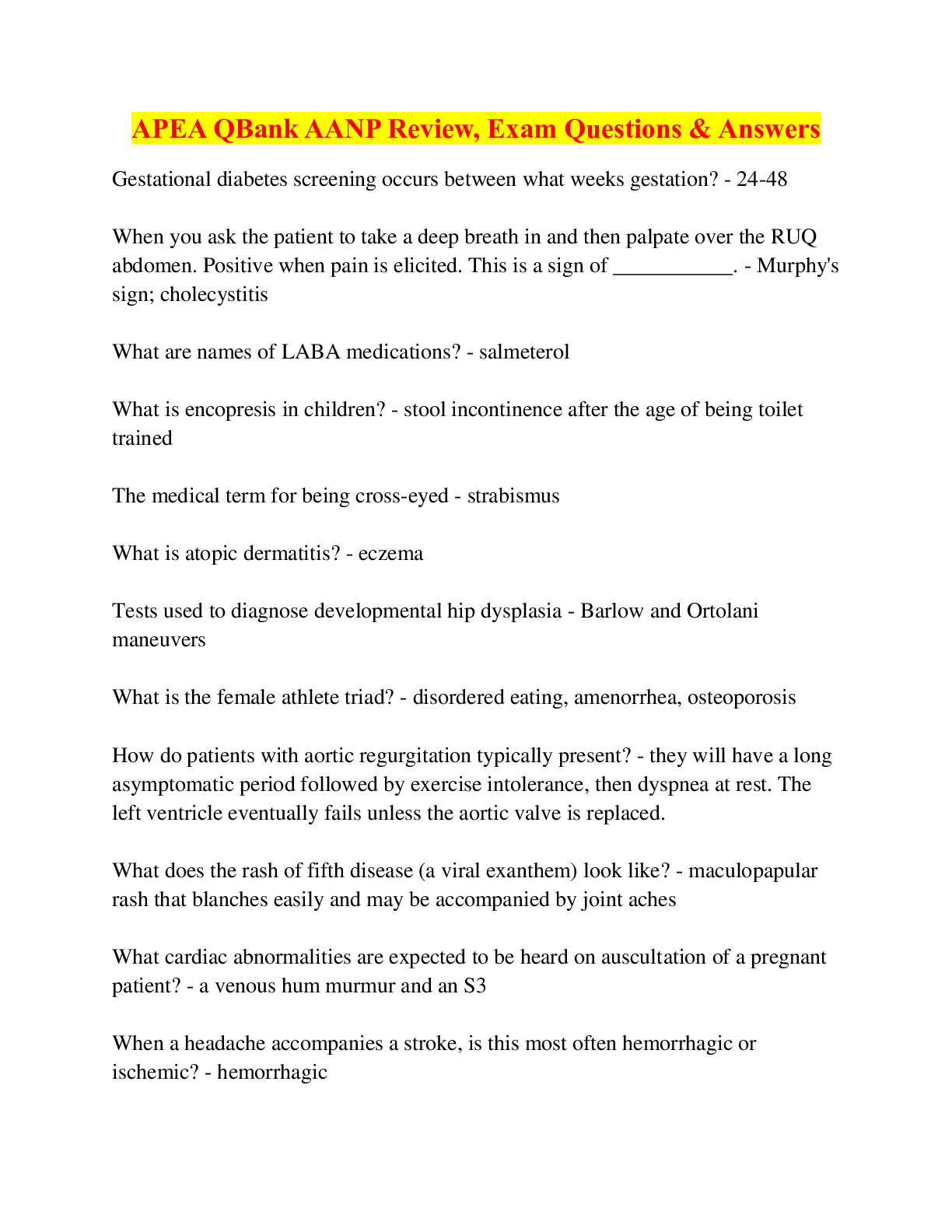
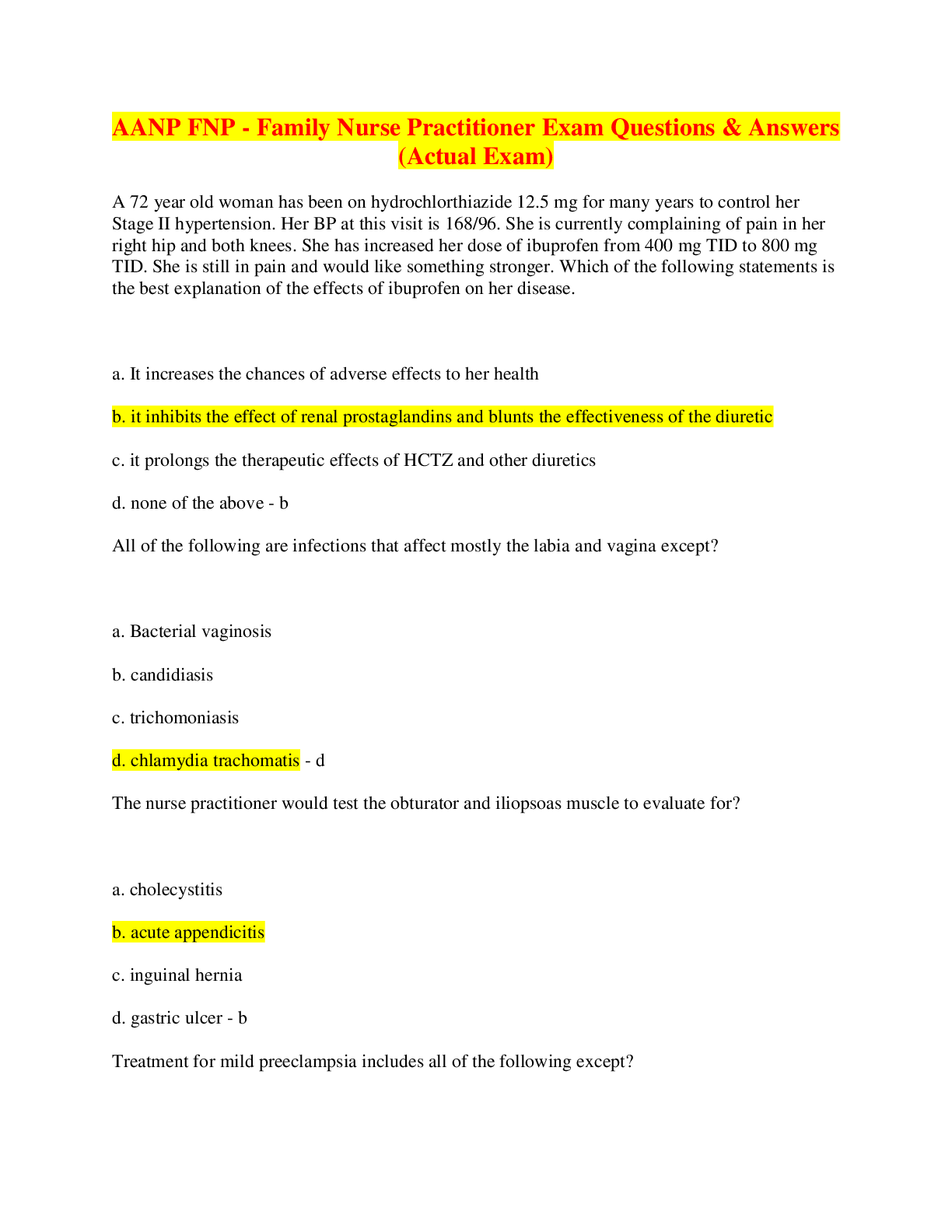
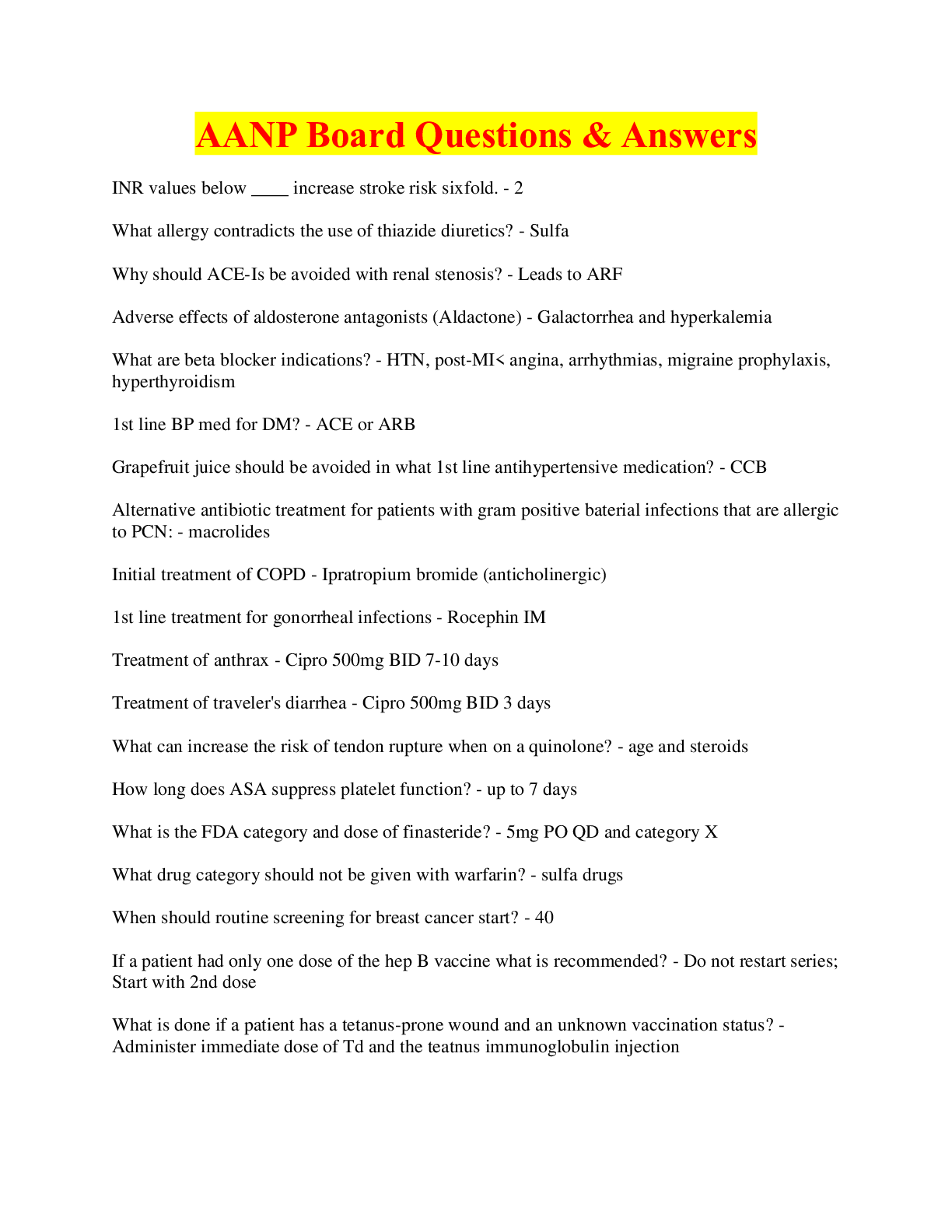
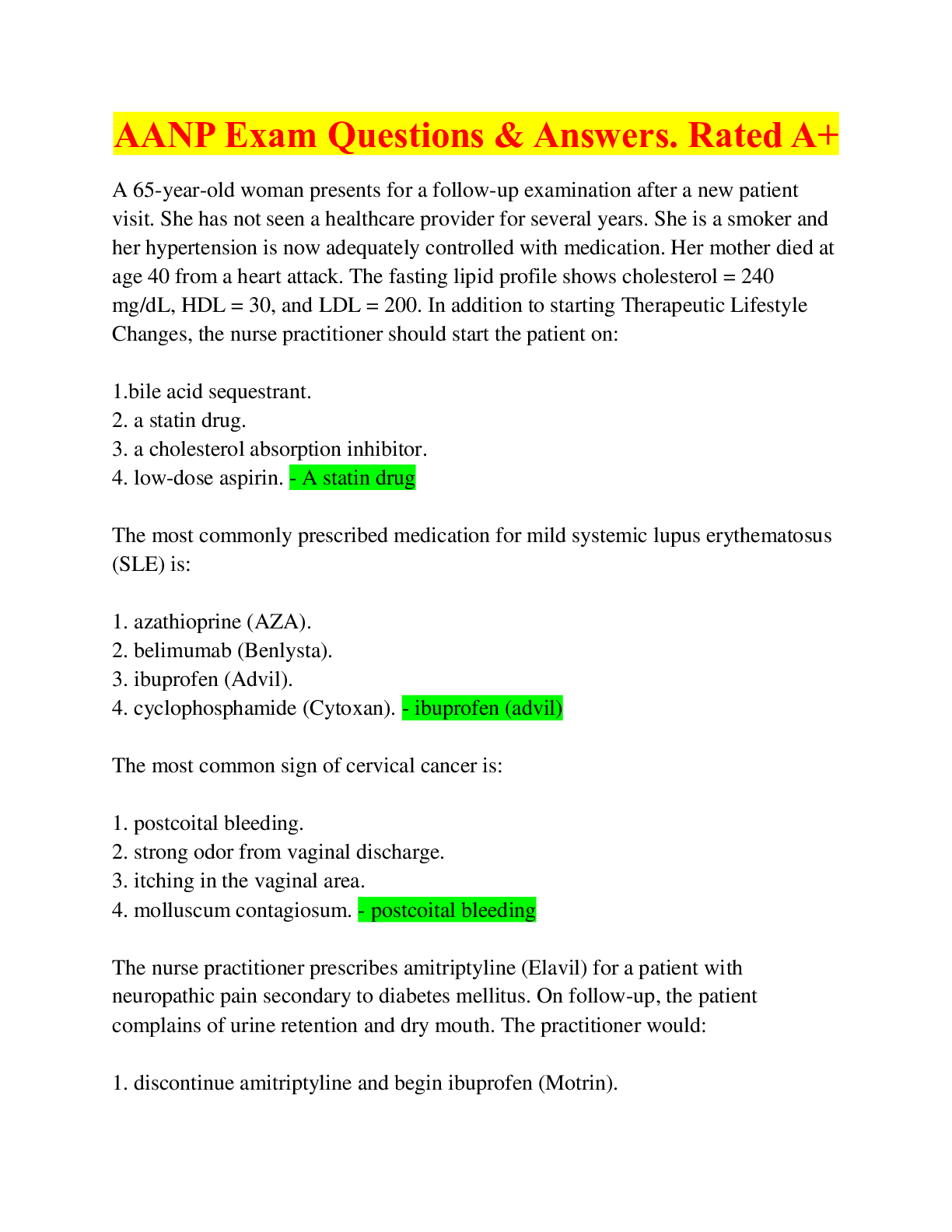
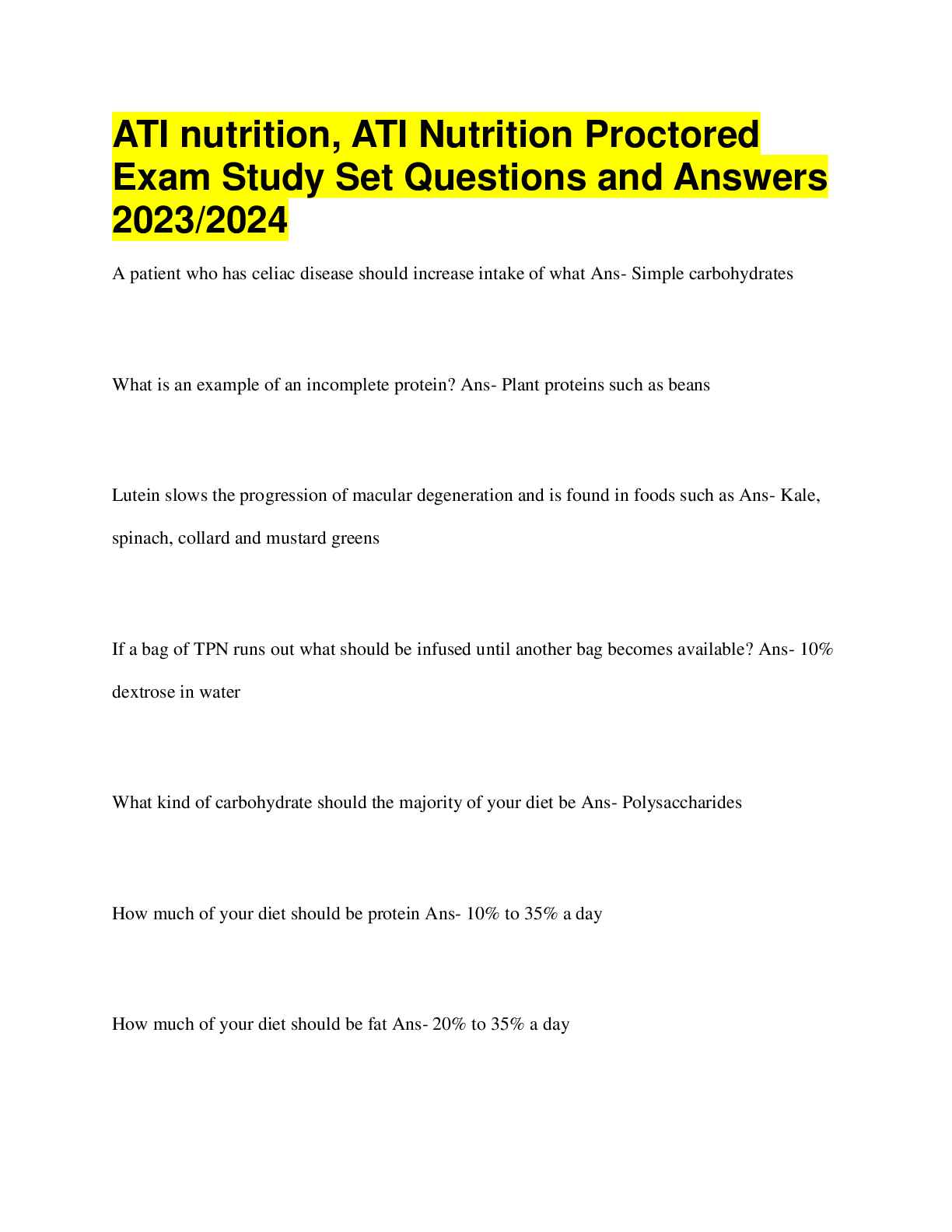
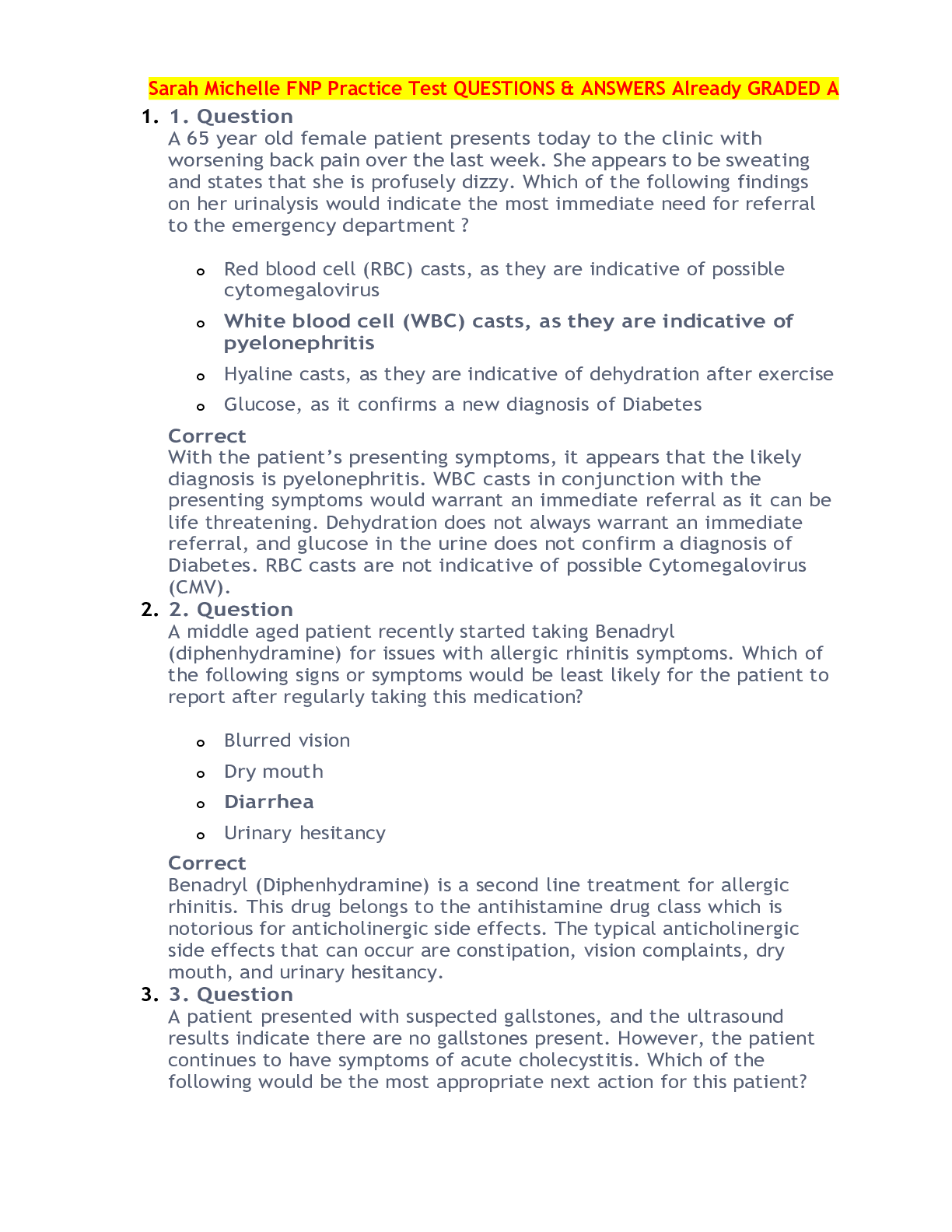
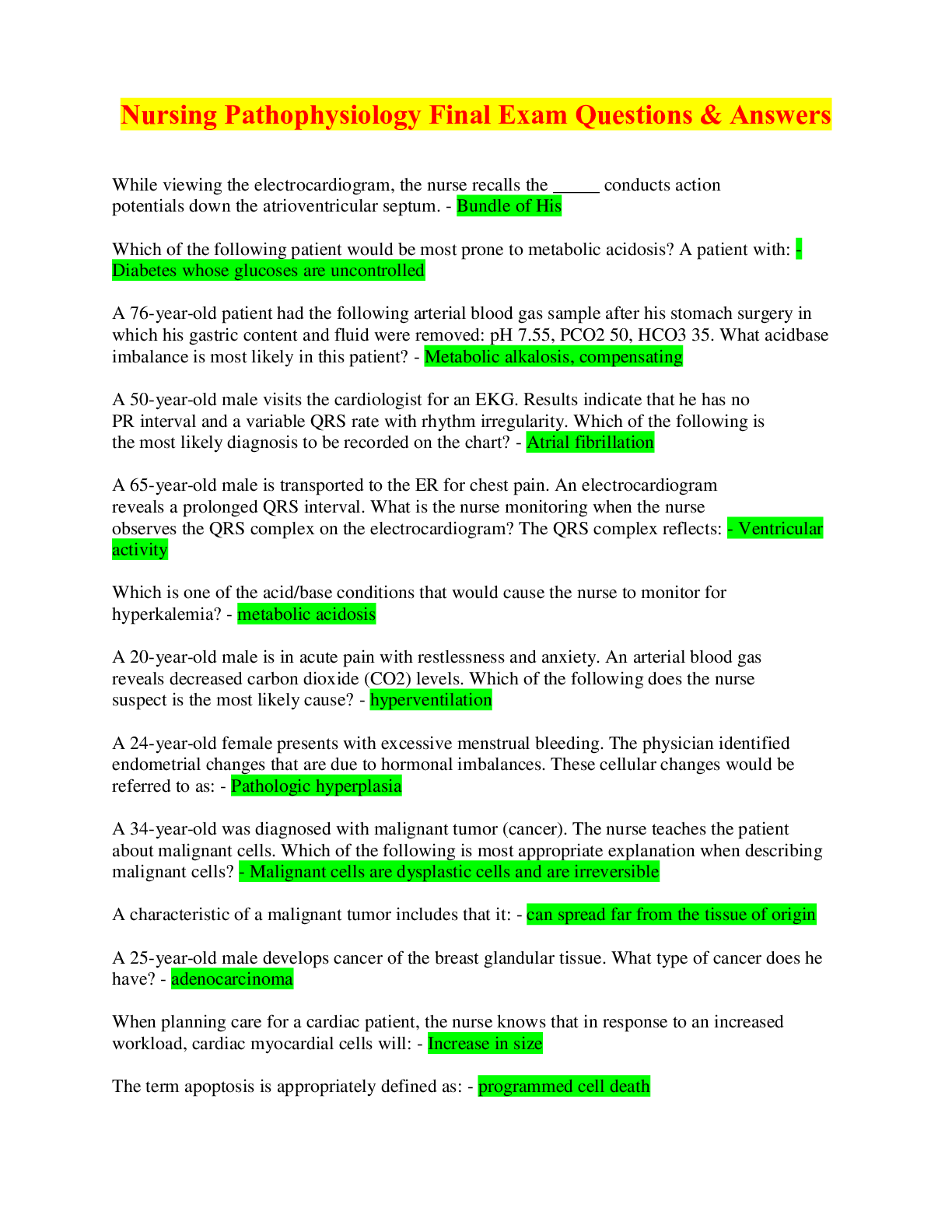
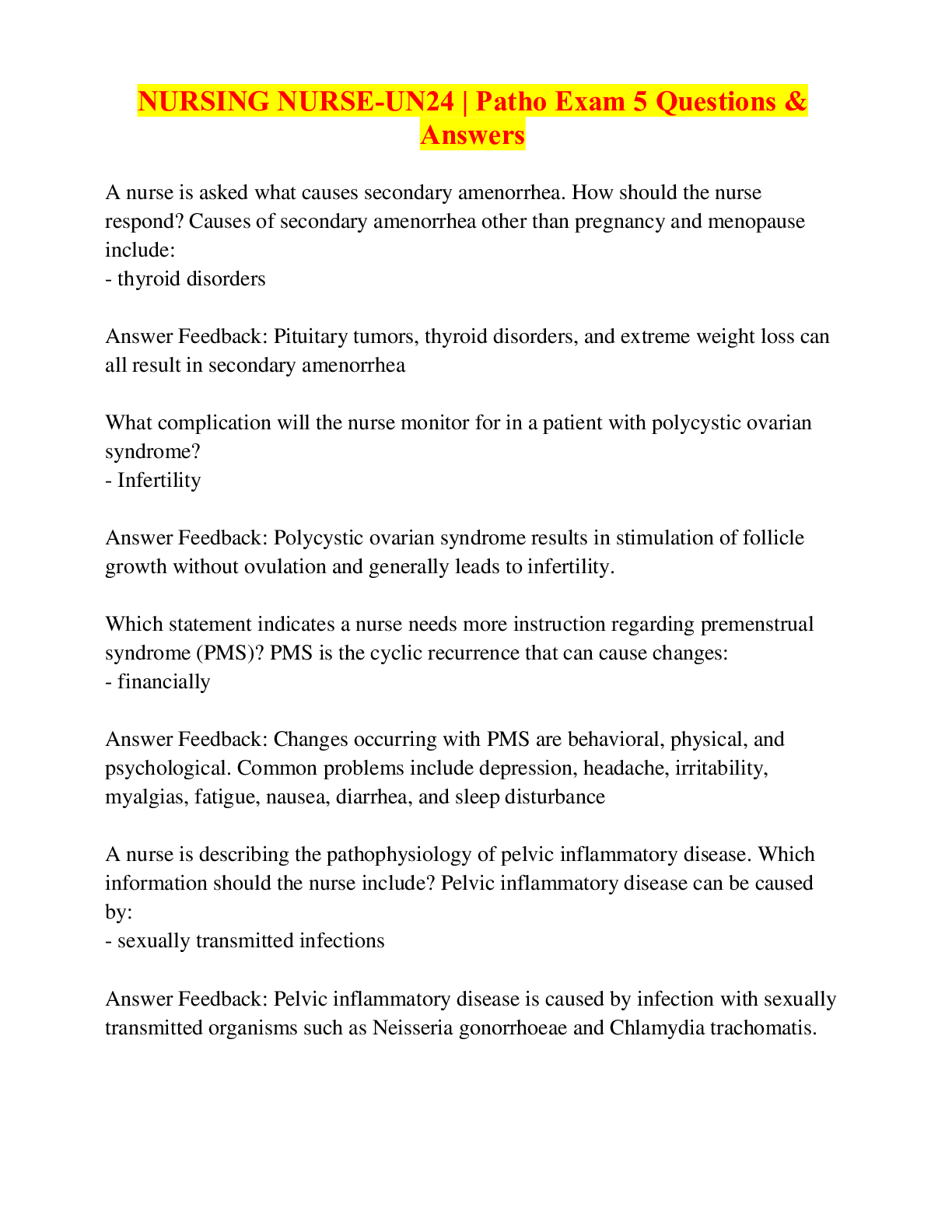

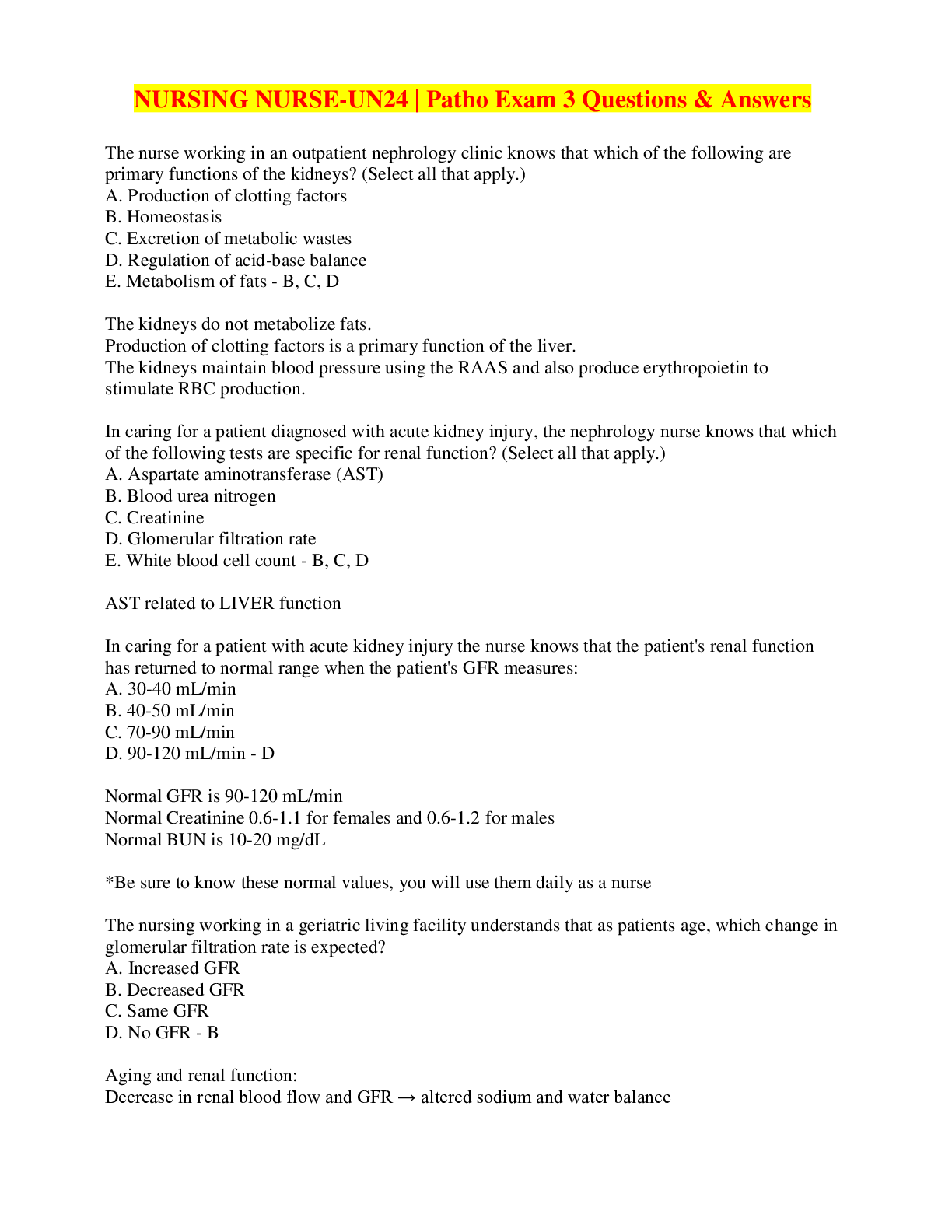
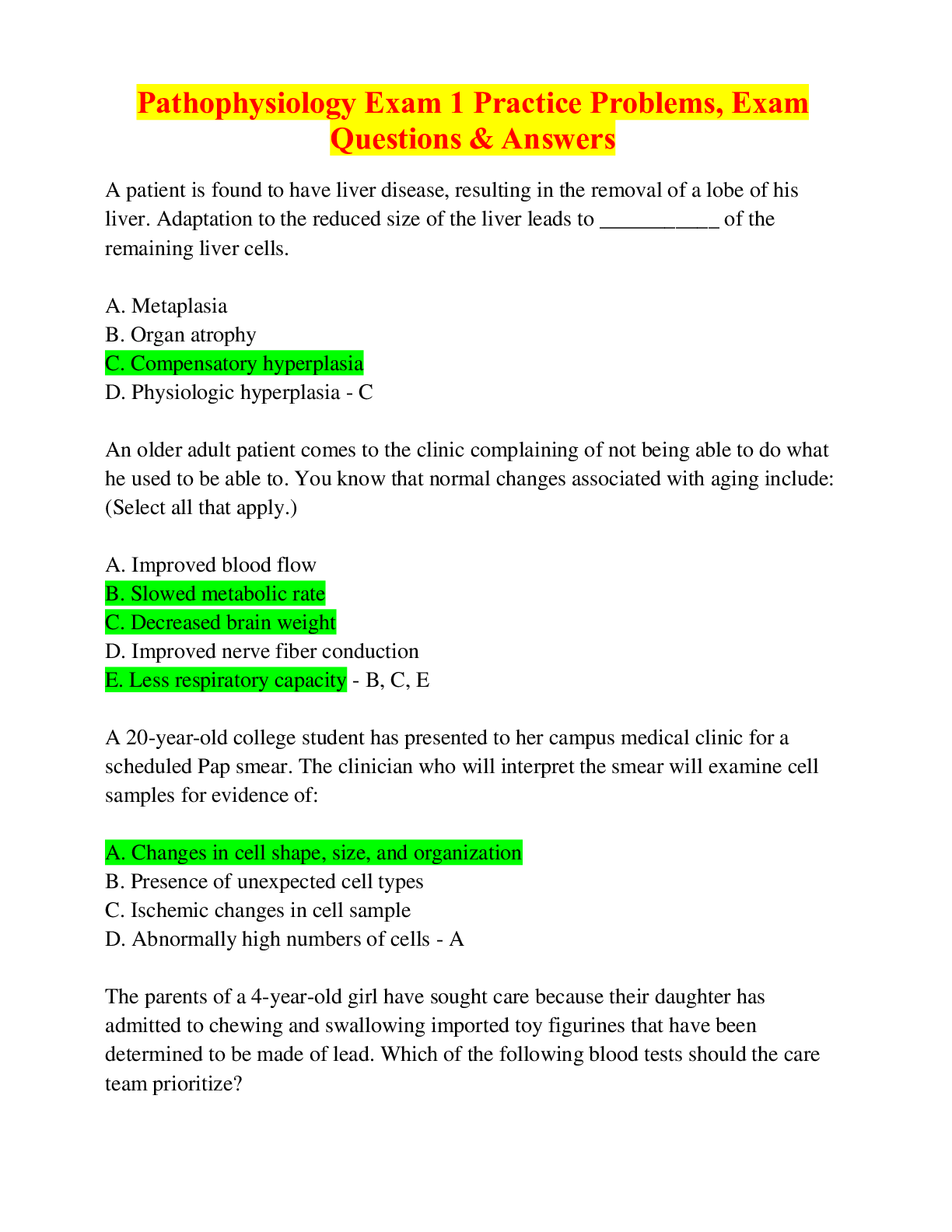
 with all correct answers.png)
 with all possible questions and answers.png)

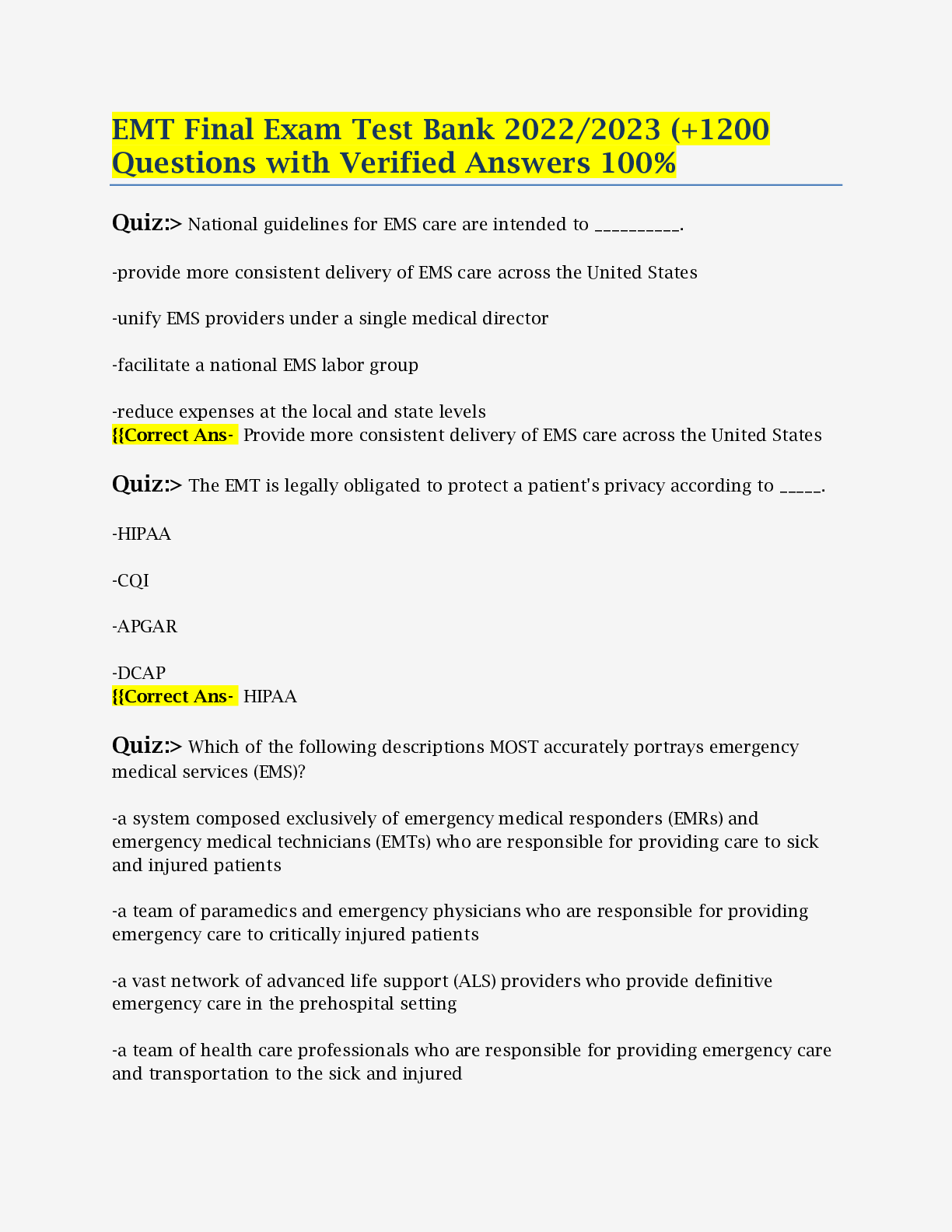

.png)


